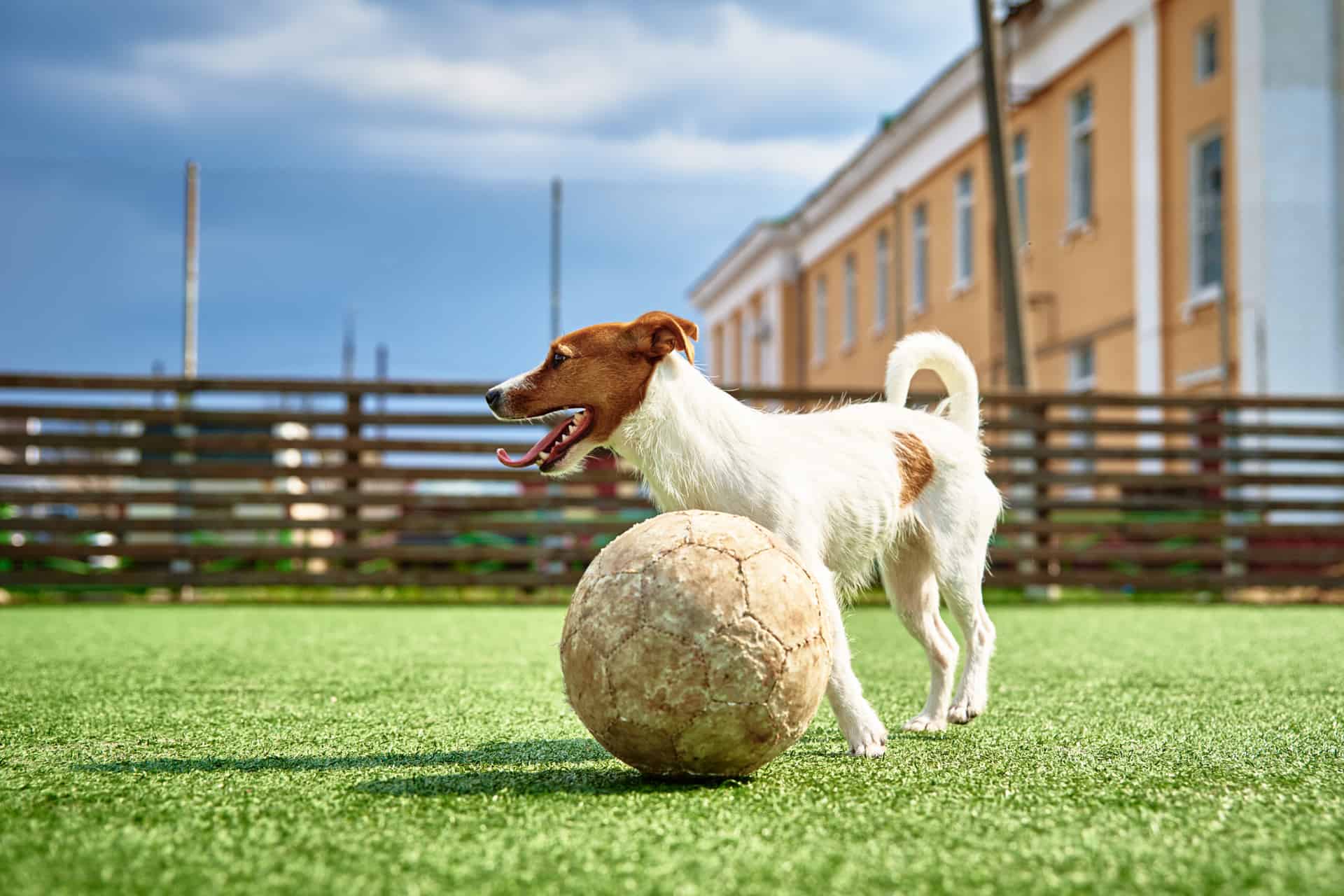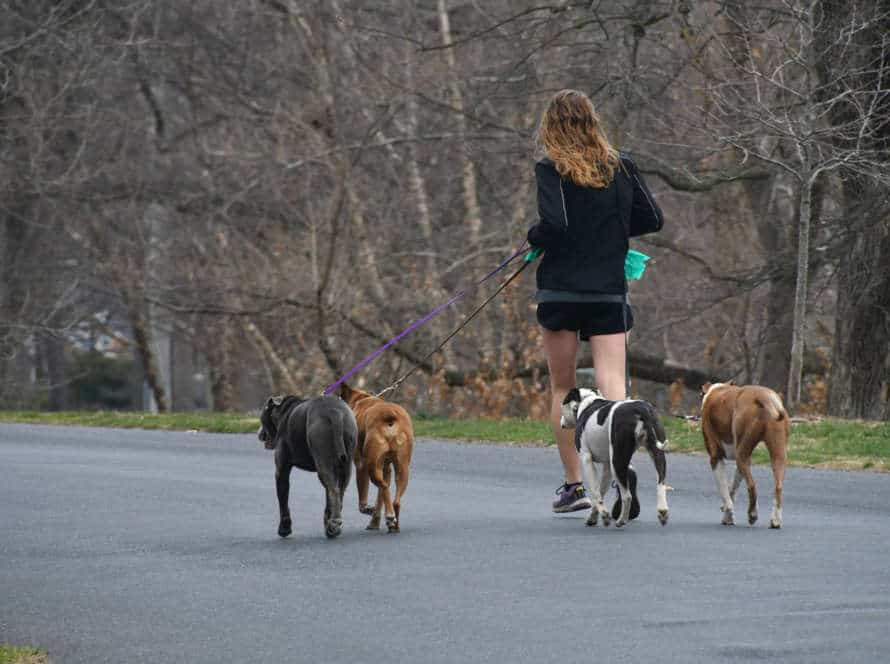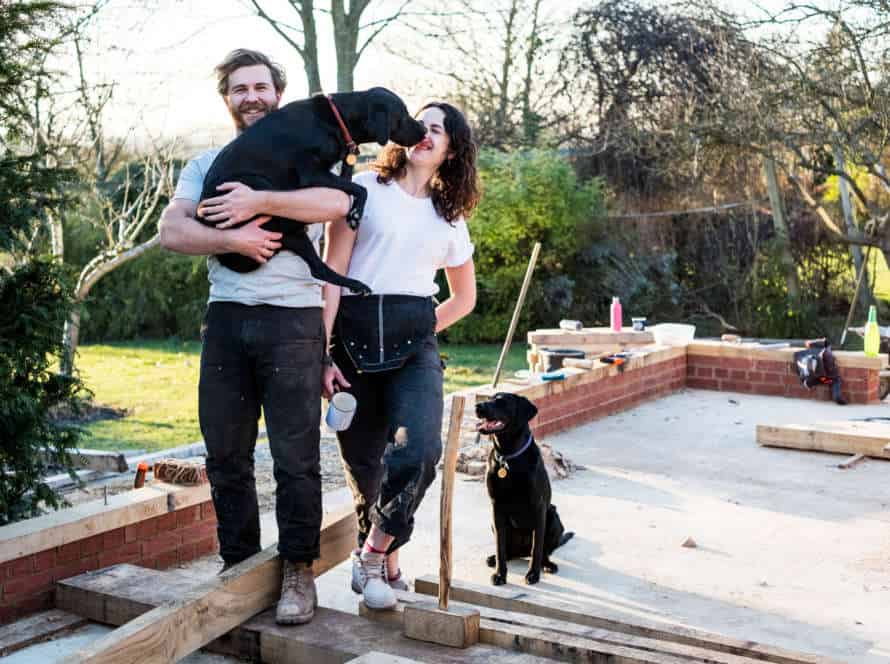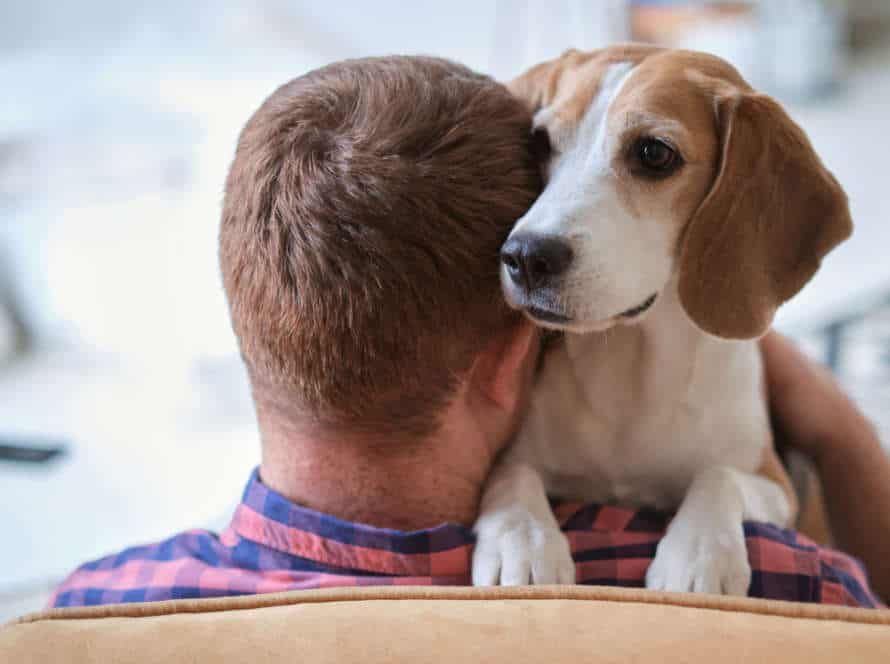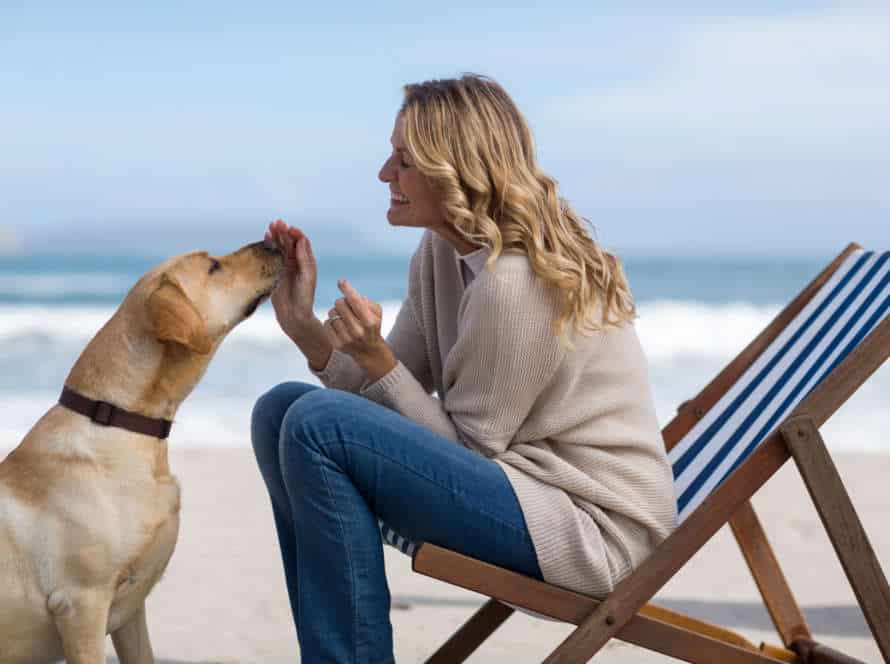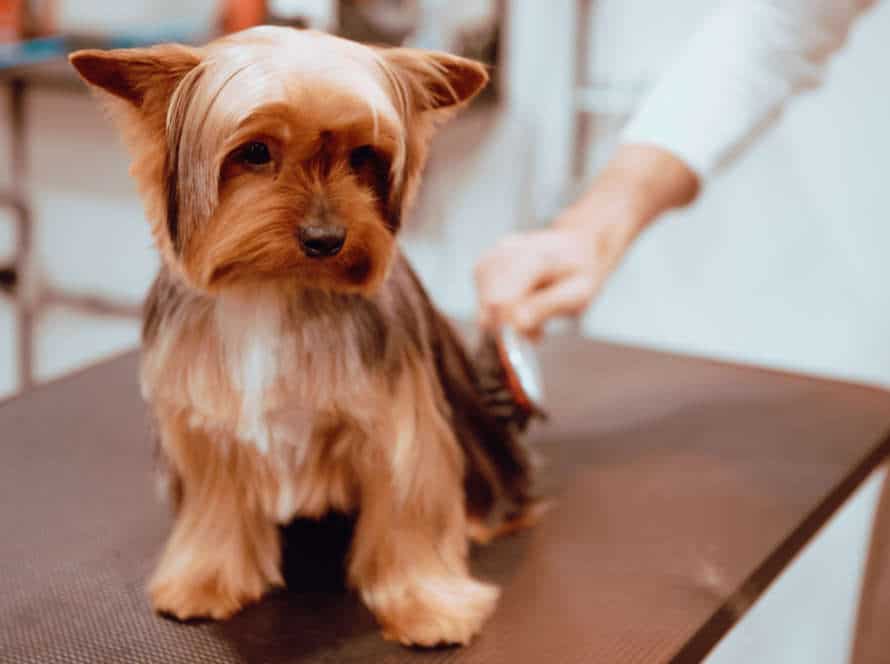Puppy Exercise: Tips for a Happy, Healthy Pup
Exercising regularly is key to your pup’s physical and mental wellness. Here are some tips to ensure they get enough exercise:
- Start gently; young puppies shouldn’t do intense exercises. Walks and indoor playtime are great.
- Let them have fun; puppies love games like fetch or tug-of-war.
- Vary the routine; explore new paths and parks to keep their minds active.
- Be mindful of the weather; puppies overheat easily. Exercise them during cooler times and make sure they have enough water.
- Listen to your pup; if they seem tired or uninterested, let them rest.
These tips will help your pup stay happy, healthy, and energetic!
Outline-
Exercising your pup is vital for their happiness and well-being. Here are some top tips to make sure their routine is safe and enjoyable:
- Begin Slowly: Start with shorter walks, then work up to longer, more intense ones.
- Age & Breed: Different breeds and ages mean different exercise needs. Check with the vet to get the best plan for your pup.
- Vary It: Alternate exercises, like walks, runs, and games, to prevent boredom.
- Positive Reinforcement: Reward your pup with treats and praise when exercising – this will motivate them and create positive habits.
- Monitor Intensity: Keep an eye out for signs of overexertion, like heavy panting or limping, and adjust exercise intensity accordingly.
By following these tips, your pup will have good exercise habits for life!
Why exercise is important for puppies
Exercise is a must for puppies! It helps keep their weight balanced, strengthens their muscles and offers mental stimulation. Plus, it can reduce destructive behaviors, stress levels, and help with potty training. Let’s look at why exercise is so beneficial for a pup!
Benefits of exercise for puppy’s physical health
For pups, just like humans, exercising is key for good physical health and wellbeing. Here are the advantages of regular exercise for puppies:
- Weight management: Exercise helps puppies to use up calories, and stay at a healthy weight, avoiding obesity.
- Muscles & bones strengthened: Doing exercise regularly helps to make the muscles and bones of young puppies stronger, advancing their physical development.
- Heart health improved: Exercise raises heart rate and blood circulation, making their cardiovascular health better.
- Energy increased: When puppies get regular exercise, they have more energy and better stamina, making them more joyful and playful.
- Mental health supported: Exercise can help ease stress, fear, and sadness in puppies, by releasing endorphins.
Tips to make your pup happy and healthy: Give your pup at least 30 minutes of exercise per day, plenty of toys for playtime, and change their routine sometimes to keep them interested!
Benefits of exercise for puppy’s mental health
Exercise is essential for a pup’s mental and physical health. Normal physical activity can avert bad behavior, reduce worry, and boost overall wellbeing. Here are some mental health benefits of exercise for a pup:
- Minimized anxiety: Exercise produces endorphins which help fight stress and anxiety in dogs.
- Improved disposition: Exercise encourages a positive and happy state of mind in puppies.
- Reduced dullness: Puppies need mental stimulation and exercise gives great chance to have fun and investigate, decreasing the possibility of being bored.
- Better sleep: Exercise assists puppies to feel tired and relaxed, improving their sleeping pattern.
Supplying regular times for exercise and play can substantially elevate the mental and physical health of your furry companion. Remember to always watch over your pup during exercise and adjust the speed and strength according to their energy level and age.
Health risks of not enough exercise
Not giving your puppy enough exercise can be risky for their health. It’s important for their growth, mental health and to stimulate their minds. Here are the risks of not exercising enough:
- Obesity: Not enough exercise increases their risk of respiratory problems, diabetes and cancer.
- Behavioral Issues: Restless, destructive and anxious behavior can happen if they don’t get enough exercise. This includes chewing furniture, biting and excessive barking.
- Developmental Issues: Exercise helps with muscle and bone development. Without it, they can have weak bones and joint problems.
To keep your puppy healthy, make sure they get regular walks, playtime and activities suited to their age and breed. Ask your vet for a safe exercise routine.
Types of exercise for puppies
Exercise is a must for puppies! It can make them happy and healthy. There are lots of activities you can do with your pup – from active play to structured lessons. Knowing the types of exercises available will guarantee you give your pup the best care and get the most out of your time together.
Low-impact exercises suitable for puppies
Puppies need exercise to stay fit and happy. But, bear in mind they have delicate bones and joints that are still growing. So, it’s important to opt for low-impact exercises. Here are some suitable exercises for puppies:
- Walking: Leash walks are ideal – they help burn energy, strengthen muscles and aid digestion.
- Swimming: This low-impact exercise increases stamina and muscle strength. Supervise puppies while introducing them to water and don’t push too hard.
- Hide & Seek: Develops problem-solving skills, stimulates the mind and gives a gentle workout. Hide their favorite toy or treat and let them search for it.
- Indoor Playtime: Great exercise on rainy days. Get soft toys, balls and tunnels for them to play with.
Pro Tip: Consult the vet before starting any exercise routine – to ensure it won’t negatively impact their growth and development.
High-impact exercises suitable for puppies
High-impact exercises are not good for puppies as their bones and joints are still growing. Instead, try low-impact ones. Here are some examples suitable for puppies:
- Walking: This helps build endurance and burn energy – start with short walks and gradually increase the duration.
- Swimming: It is easy on their joints and helps build strength and endurance. Introduce your puppy to water slowly and watch them carefully.
- Indoor playtime: Such as fetch, tug-of-war, and hide-and-seek. This type of exercise helps build coordination, balance, and mental stimulation.
Always monitor your puppy during exercise and stop if they show any signs of pain or discomfort.
Indoor exercises suitable for puppies
As a responsible pet owner, exercising your puppy is essential for their physical and mental wellbeing. Here are some fun indoor exercises you can do with your pup:
- Tug-of-war: This game can help with your puppy’s strength, coordination, and focus. Remember to use a soft and chew-resistant rope or toy. Teach your puppy to release on command too!
- Fetch: Throwing and retrieving a soft toy or ball is great for burning off excess energy. Plus, it’ll improve their agility and responsiveness. Make sure to choose a safe area.
- Hide-and-seek: This game can help with problem-solving skills and mental agility. Start with hiding somewhere easy and increase the difficulty level. Don’t forget to reward your pup!
- Stair runs: Going up and down the stairs will develop your pup’s leg muscles and cardio-respiratory system. Always supervise your puppy to prevent injuries.
Pro Tip: Make sure to give your pup outdoor exercise and socialization. Consulting a veterinary expert can help you design a suitable exercise plan.
Creating an exercise routine for your puppy
Exercise is a must for puppies. It stimulates their minds, relieves energy and helps with behavioural issues. So, let’s create a successful fitness routine for your pup! Here’s some tips:
- Make sure the routine is regular. This will ensure your doggo stays fit and healthy.
Introducing your puppy to exercise
Introducing exercise to your pup is super important for their wellbeing. Here are some tips to help make a plan:
- Start slow. Puppies have loads of energy but joints and muscles still need to develop. Increase intensity and duration as they grow.
- Choose age-appropriate exercises. Younger pups should focus on low-impact activities like walking, fetch, and basic obedience. Older pups can do more intense ones like running, hiking, and agility training.
- Think about breed. Different breeds need different amounts of exercise. Research to find out what’s best for yours.
- Set a schedule. Pick a time that works for you and stick to it. This will help your pup create a routine and avoid behavior issues.
- Have fun! Exercise should be a positive experience for both of you. Include lots of playtime and praise.
Finding the right frequency and duration of exercise for your puppy
Pups need specific exercise regimes tailored to their breed, age and energy. Finding the right amount of exercise for your pup will keep them healthy and happy. Here are some tips to help:
- Consult your vet to check they’re fit for exercise.
- Think about your pup’s breed and energy when deciding how much exercise they need.
- For puppies under 6 months, limit high-impact activities to short bursts throughout the day.
- Increase intensity and duration as your pup grows.
- Give them water and rest in between.
- Avoid exercising during extreme weather.
- Exercise not only boosts physical health, but also helps with mental stimulation and creates a bond. Pro tip: Mix up activities like walking, running and playing to keep them interested and develop them fully.
Creating a varied exercise routine for your puppy’s well-being
For your puppy’s well-being, a varied exercise routine is key. Walks, games, socialization, running, and fetch are moderate-intensity activities. Chewing and exploring are low-intensity activities. Switching up activities often helps your pup stay stimulated.
Follow these tips to help your pup stay healthy:
- Warm-up with stretching.
- Gradually raise the intensity & duration.
- Make sure activities are age & breed-appropriate.
- Monitor behavior & body language for overexertion.
- Include enjoyable activities like playing with toys or swimming.
Creating a varied exercise routine for your puppy will ensure an active & healthy lifestyle.
Safety tips for puppy exercise
Puppies need exercise! It’s key for them to be happy and healthy. Just like us humans, they must stay active to keep their bones, joints, and muscles strong. But remember to keep your pup safe while they’re exercising. Here are some tips so your puppy has a safe and enjoyable exercise time:
Importance of proper warm-up and cool-down exercises
Warm-up and cool-down exercises are a must for pup safety and maximizing workout success. Warm-ups prep their muscles, joints and heart for more demanding physical activity. Cool-downs help them recover and avoid stiffness. Here’s some tips:
- Start with a 5-10 min brisk walk to warm-up muscles and get their heart rate up.
- Gradually progress to more intense activities like running or jumping.
- Keep an eye out for signs of fatigue, dehydration or overheating, e.g. excessive panting, drooling or slowing down.
- Cool-down with a gentle 5-10 min walk or stretch.
- Always provide plenty of water and rest during and after exercise.
Keeping your puppy hydrated during exercise
It’s essential to keep your pup hydrated during exercise for their well-being. Here are some tips to make sure your furry pal stays hydrated:
- Bring lots of water – pack enough for both you and your pup, plus a collapsible water bowl.
- Take regular pauses – allow them to rest & drink water every 15-20 minutes.
- Avoid hot weather – high temperatures can cause dehydration & heatstroke in puppies. Exercise in the early morning or late evening when it’s cooler.
- Observe their behavior – watch for signs of dehydration like lethargy, panting, and dry gums. Offer water right away.
By following these tips you can make sure your pup is healthy and hydrated during exercise. Don’t forget to ask your vet if your pup is ready for physical activity.
Signs of over-exercise and injury to look out for
Exercising pups can lead to injuries. Here are signs to watch out for to keep your pup healthy:
- Limping or just using one leg? Could be an injury.
- Panting or drooling too much? Could be dehydration or heatstroke.
- Refusing to move? Could be sore muscles or a major injury.
- Stumbling or lack of balance? Tiredness or injury.
- Whining, whimpering, or crying? Could be pain or unease.
If any of these show up, stop exercising your pup. Also, warm up and cool down properly. Don’t do too much physical activity for too long. Provide water and shade to avoid overheating.
Fun exercise activities for puppies
Exercising is vital for a puppy’s health and happiness. Not just for keeping them fit, but it also improves their behavior and social skills. Select activities that help your pup both physically and mentally. Here are some fun exercises you can do with your pup to keep them healthy and cheerful:
- Take them for regular walks or runs to keep them active.
- Play fetch or frisbee to improve their agility and coordination.
- Teach them new tricks to stimulate their minds.
- Take them on hikes or nature walks to expose them to new sights and smells.
- Let them swim or play in water to cool off and exercise their muscles.
Interactive playtime with your puppy
Interactive playtime is key for puppies to keep fit & avoid destructive habits. Here are some exercises to help your pup expend energy & strengthen your bond:
- Fetch – a great way to burn off energy.
- Tug of War – mentally & physically engaging.
- Hide & Seek – helps build problem-solving skills.
- Agility Training – helps with balance, coordination and commands.
- Socialize – take them to the dog park for free play & social skills.
Plus, don’t forget to walk them for fresh air and occasional changes in scenery. It’s good for their mental health. Pro tip: Always supervise playtime for safety!
Outdoor activities suitable for puppies
Puppies need exercise and outdoor activities for their well-being. Here are some fun activities for them:
- Walks: Strolls with your pup are great for socializing and exploring new sights and smells.
- Fetch: Playing fetch is a great way to have fun and improve their coordination.
- Hide and seek: This game helps them to think and stay mentally active.
- Agility training: Try setting up a course in your backyard to help them get better at coordination, balance and speed.
- Swimming: If they love water, take them for a swim to strengthen their muscles and build endurance.
Remember to supervise your puppy and provide plenty of water and rest breaks. Pro tip: Positive reinforcement like treats and praise will keep them engaged and motivated.
Training exercises to incorporate into your puppy’s routine
Incorporate training exercises into your pup’s daily plan for a contented and healthy life. Check out some great exercises to try out:
- Obedience training: Teach simple commands like “sit,” “stay,” “come,” and “heel.” These can help to form a strong base for more involved training and good habits.
- Socializing: Introduce your pup to strangers, different settings, and other animals. This can help them feel relaxed and safe in a variety of circumstances.
- On the move: Take your pup for regular walks, jogs, or hikes. This can help them to get rid of energy and stay in shape.
- Fetch: Playing fetch is a cool and useful way to help your pup develop coordination, speed, and stamina.
- Agility training: Designing an obstacle course or agility course can be educational and enjoyable for your pup.
Make sure to make training fun and positive, and encourage good behavior with treats and compliments. Enjoy the training!
Frequently Asked Questions
1. How much exercise does my puppy need?
Most puppies need about 30 minutes to 1 hour of exercise per day, depending on their breed and energy levels. However, it’s important to monitor your puppy’s behavior and adjust their exercise routine accordingly.
2. When can I start exercising my puppy?
Puppies can start gentle exercise as early as 8 weeks old. However, it’s important to avoid high-impact exercises until they’re fully grown to prevent joint damage.
3. What types of exercises are best for puppies?
Low-impact exercises are best for puppies, such as short walks, playtime in a fenced-in yard, and gentle games of fetch. Avoid high-impact exercises like running on hard surfaces until your puppy is fully grown.
4. Can I take my puppy for a run or hike?
It’s best to wait until your puppy is fully grown before taking them on long runs or hikes. Start with short walks and gradually increase the distance over time.
5. How often should I exercise my puppy?
Puppies should be exercised daily, with multiple short play sessions throughout the day to prevent boredom and promote healthy development.
6. Should I supervise my puppy during exercise?
Yes, it’s important to supervise your puppy during exercise to ensure their safety and prevent accidents. Keep them on a leash during walks and playtime, and provide plenty of water and rest breaks.

